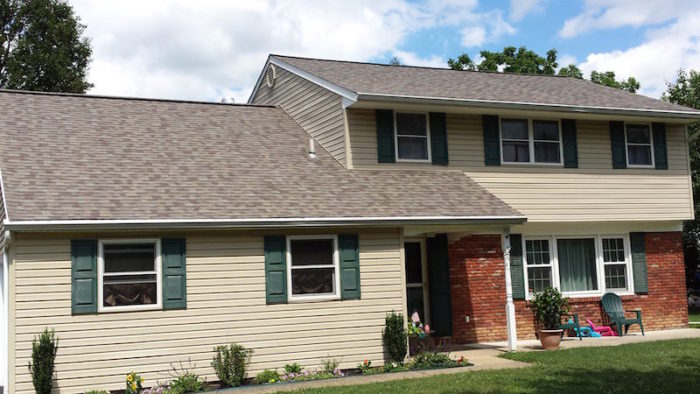Your roof is only as good as the materials used in its construction. Similarly, how effective it is will depend on how well the flashing is installed. Flashing acts as a key barrier to keep moisture out. Yes, it’s for aesthetics purposes too, but mainly it’s designed to keep moisture from leaking into the creases of your roof. Those creases are the most vulnerable part of your roof, to be sure. When choosing a roofing company, make sure you ask about flashing, what brands they use and how they install it for the most effective results later. From residential to commercial roofing, flashing is a key component to each.
What’s Flashing?
First off, the elements pose the greatest threat to the integrity of your roof. If water is allowed to get in, this can only spell bad news for your walls, ceilings, insulation and flooring because leaks will occur. As one of the first barriers of defense against the elements, flashing is a critical part of your roofing system. It must be installed correctly in order to prevent water intrusion. Essentially, flashing is a protective seal that prevents water from getting in at critical points, such as:
- Skylights
- Chimneys
- Dormers
- Vents
Flashing must be installed at all areas of roof penetrations, including edges, valleys and joints. It must also be installed along any grooves, gaps, intersections and projections on the surface.
According to DIY Network, flashing also directs the flow of water around openings on your roof. If water seeps in, it can deteriorate building materials, causing structural damage, and giving you moisture and mold headaches you could probably live without. Flashing can be used during both new construction and renovations or remodels. Flashing is found in many places, such as on wood trim on doors, shelves and windows. You’ll also find it near exterior stairways and decks, and around any roof structure features (mentioned above).
Why is Proper Installation Necessary?
Putting shingles or a metal roof onto a home or business takes experience and skill, that’s for certain. But it’s at those points of penetration where that skill will really be put to the test. Poor or improper flashing will result in premature deterioration at the roof joints, causing you more problems down the line in terms of repair. You may even have to replace your roof a lot sooner than you thought you would. Getting it right the first time around is imperative in preserving your investment.
Types of Flashing
Flashing can be comprised of many materials, such as sheet metal, plastic or composite materials. Sheet metal is generally the most durable but also the most expensive option. You can also use copper or stainless steel, but those also come with a pretty steep price tag. PVC plastic flashing will cost you less than, say, metal but direct sun contact can cause excessive wear and tear. Lead is soft and can easily be bent, plus it’s durable and ideal for chimney flashing. It’s a common choice for brick masons while constructing chimneys, in fact.
Contact Ferris Roofing Contractors Inc.
Based in Haslet TX, Ferris Roofing fort worth TX should be your first call for roofing systems of all kinds. We never skimp on flashing and we always ensure you every step of the way when it comes to quality installation. Contact us to find out more.


